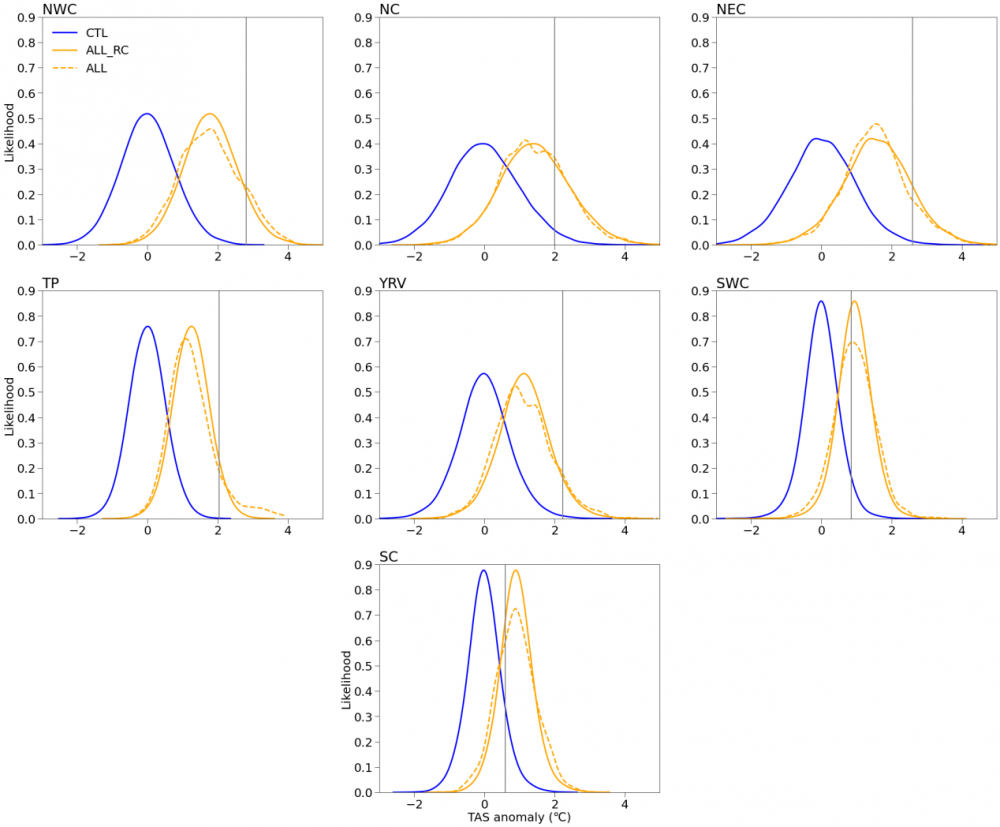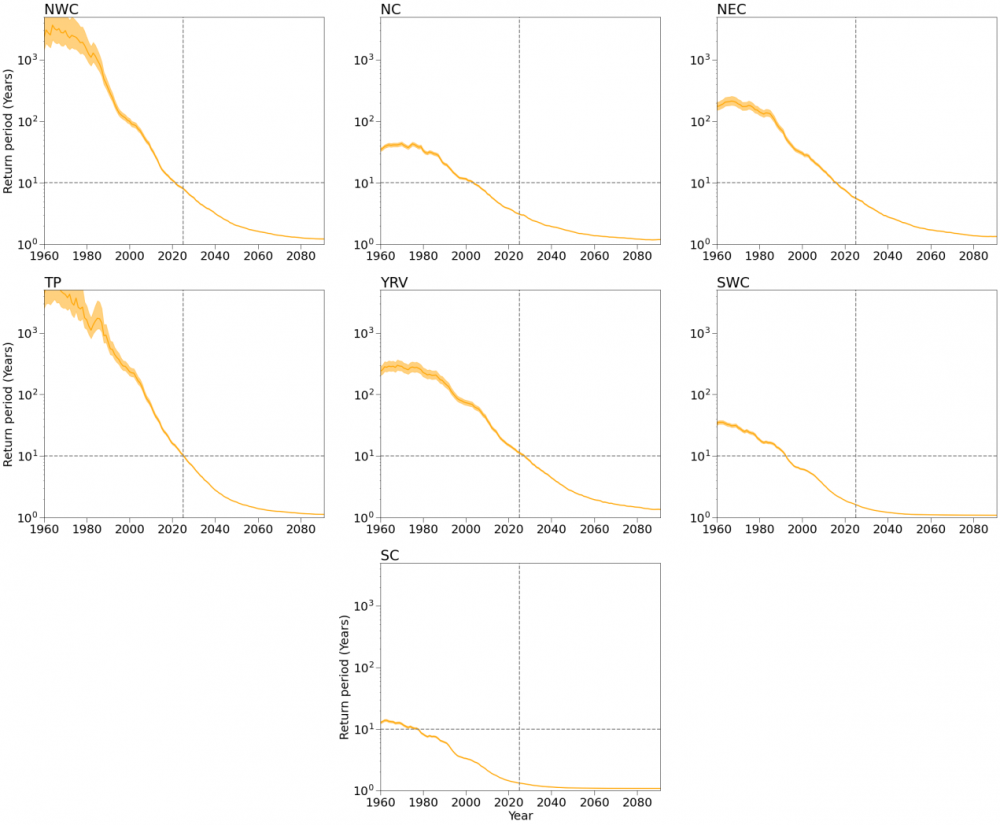Rapid Attribution of July 2025 Extreme Heat in China: Widespread Record-Breaking Events Intensified by Human Influence
On August 7, 2025, the Beijing Climate Center released a rapid attribution analysis of the extreme high-temperature events that affected China's seven climate regions in July 2025. The key findings are summarized below.
Observational data (Fig. 1) indicate that the July mean temperatures in Northwest China, Northeast China, the Tibetan Plateau, and the Middle-Lower Yangtze River Valley all reached record highs since instrumental records began. Temperature anomalies relative to the 1961–1990 baseline were 2.82 °C, 2.60 °C, 2.04 °C, and 2.23 °C, exceeding the historical mean by 5.0, 4.0, 4.3, and 3.0 standard deviations, respectively. In North China, Southwest China, and South China, July mean temperatures were 2.00 °C, 0.86 °C, and 0.59 °C above normal (exceeding the mean by 3.4, 2.2, and 1.4 standard deviations), ranking as the fifth, eighth, and thirteenth warmest July on record. This exceptional and widespread warming triggered significant extreme heat events across multiple regions.

Fig. 1. Left: Observed (OBS) and CMIP6-simulated (ALL: all-forcing experiment, NAT: natural forcing only) July mean temperature anomalies (relative to 1961–1990, in °C) from 1961 to 2025 for China and its seven climate regions. Shading indicates the 5%–95% range of the multi-model ensemble. Right: Corresponding warming trends (in °C/decade). An asterisk (*) indicates a trend significant at p < 0.05; vertical lines denote the 5%–95% confidence intervals.
Region abbreviations: CHI: China, NWC: Northwest China, NC: North China, NEC: Northeast China, TP: Tibetan Plateau, YRV: Middle-Lower Yangtze River Valley, SWC: Southwest China, SC: South China.
Attribution analysis based on CMIP6 models (Figs. 1, 2) suggests that, in the absence of anthropogenic influence, extreme high-temperature events similar to those observed in Northwest China and the Tibetan Plateau would have been exceptionally rare. Under the current climate state (2020–2030), human activities have increased the probability of extreme high-temperature events similar to those of July 2025 in Northeast China and the Middle-Lower Yangtze River Valley by factors of 22.3 and 16.7, respectively (90% confidence intervals: 19.5–26.2 and 14.1–20.2). For North China and Southwest China, human influence raised the probability of such events by 9.9 and 14.1 times, respectively (90% confidence intervals: 9.2–10.5 and 13.4–15.0). In contrast, high temperatures in South China were less extreme; while a human influence remained exist, its warming effect was largely offset by natural variability.

Fig. 2. Influence of human activities on the probability of July 2025 high-temperature events across China’s seven climate regions. Solid blue and orange lines represent the probability distributions under the current climate state (2020–2030, an 11-year window centered on 2025) for the all-forcing (ALL) and pre-industrial control (CTL) experiments, respectively. The orange dashed line indicates the reconstructed ALL distribution obtained by combining the adjusted anthropogenic forcing response with unforced internal variability. Vertical lines mark the July 2025 event thresholds.
Under the medium emissions scenario (SSP2-4.5), CMIP6 projections (Fig. 3) indicate a substantial rise in the probability of similar extreme high-temperature events in Northwest China, Northeast China, the Tibetan Plateau, and the Middle-Lower Yangtze River Valley. By the 2030s, the return periods for such extreme heat are projected to be 5.8 years, 4.4 years, 6.4 years, and 8.3 years, respectively (90% confidence intervals: 5.6–5.9, 4.3–4.5, 6.3–6.6, and 8.0–8.6). By the 2070s, record-breaking high-temperature events of this kind are expected to become the norm across most of these regions.

Fig. 3. Evolution of the return period for July 2025-like high-temperature events from 1961 to 2100 across China's seven climate regions. Shading indicates the 5%–95% confidence intervals.
These results were obtained using the rapid attribution prototype for extreme high temperature developed by the Key Innovation Team on Climate Change Detection and Response of the China Meteorological Administration. The prototype employs a CMIP6-based response correction attribution method, integrating model output and observational data through preprocessing and model pre-evaluation to establish an optimized operational framework suitable for rapid attribution.
For further details, please refer to: Advances in Climate Change Research
(https://www.sciencedirect.com/science/journal/16749278)











